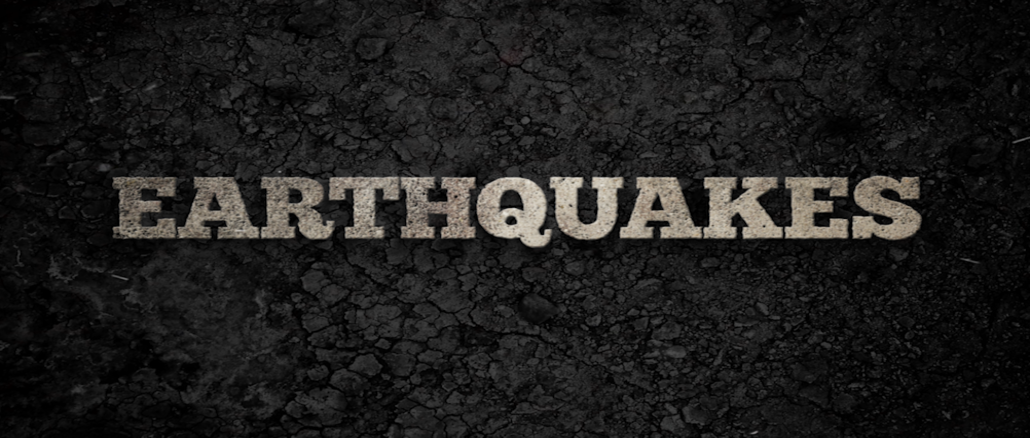Gili Trawangan is the largest in the 15km2 archipelago of three islands. It’s a popular destination for honeymooners and divers, only accessible by a 40-minute boat ride from the mainland.
At 7.46pm on Sunday, August 5, the dinner rush was underway in the beachfront restaurants and bars. The tropical 31-degree evening turned to mayhem when a magnitude 6.9 earthquake struck 70km east near the base of Mount Rinjani on Lombok.
British expats Adam Baxter and Sarah Best took over management of Trawangan Dive – the first diver-development centre in the region – in 2012. They had experienced earthquakes before, including a magnitude 6.4 a week earlier, but all paled in comparison to the one that struck that Sunday night.
The couple was in one of the beachfront restaurants when the quake hit.
Having avoided serious injury, they raced through the main streets towards their business, to survey the damage, despite the looming threat of a tsunami.
In the large group heading for the hill was Hornsby couple Emily Phillips and Peter Yeates, from Sydney’s Upper North Shore.
They were about one week into their Indonesian holiday when the earthquake struck. The pair had returned to their villa after a day spent snorkelling and cycling around the island.
“We didn’t really know where we were running, we were just following everyone.”
“We were talking, and it was enough to stop our conversation, and say: ‘Earthquake?'” the 23-year-old teacher’s aide said.
“The shaking became so intense, the floor began moving back and forth.”
“When we got out all we heard were screams of: ‘Go! Go! Everyone! Go!'”
They managed to escape the carnage by squeezing through a damaged door at the back of the resort.
At 30 metres tall, Gili Trawangan Hill is the highest point on the archipelago, and is a two-kilometre hike from the beach bar-lined main roads of the island’s east coast.
For Ms Best, the widespread panic and chaos in the aftermath was the most frightening part. Looters were also causing mayhem.
“I was six months pregnant at the time, so battling against a wave of people was already a struggle,” she said.
“Water-sports shops were being broken into, and people were taking life jackets.”
The damage to the centre was minor. Some of the outer walls had collapsed, and most of the rooms had cosmetic damage to the walls.
Members of their staff weren’t so fortunate. Most of the crew was from North Lombok, the epicentre.
The majority lost their homes, and those on Gili Trawangan left to check on their families.
“Because I was pregnant, I had to make the painful decision to leave the island immediately after the quake,” she said, speaking three weeks after welcoming her newborn. “I travelled to Bali to coordinate supply efforts from there.”
“I think when you live, or holiday on a paradise island, people become divorced from the realities of life.”
At first glance, there appears to be an increase in seismic activity of magnitude 5 or higher worldwide, but experts say it is no cause for concern.
Dr Trevor Allen from Geoscience Australia says most of the activity happens away from populated areas.
“It’s important to note a large proportion of these earthquakes occur at tectonic plate boundary locations, predominantly offshore, or deep within Earth’s crust,” he said.
Geophysicist and contributor to the USGS Geologic Hazards Science Center, Lisa Wald, says the long-term rate is also steady.
“The frequency of earthquakes is the same as it always has been.”
Ms Best’s partner, Adam Baxter, and three other members of the Trawangan Dive team were part of a 30-strong group that remained on the island to help with the clean up.
The team also spent their days cycling around the island and feeding the abandoned animals, including several wild stallions. Although they were without power and fresh water until the following week, the centre’s three cats, Beadle, Monkey and Legs, didn’t even miss a meal.
“People were sitting together, trying to sleep, praying. It was a long night; a really long night.”
The locals weren’t too concerned, and even had go-bags with snacks and bottled water, and blankets to share. The pair arrived thirty minutes after the initial quake, and sat around a campfire with some locals and European tourists until sunrise just after 6am.
By the time they reached the beach after collecting their luggage, thousands of holidaymakers were on the soft sand waiting to be evacuated.
“Every time a boat would come to shore, everybody would panic and push each other out of the way to get to the front,” Mr Yeates, a 25-year-old accounts manager said.
The islands have now been declared safe, and the locals would like to see tourists return, since the industry accounts for a large portion of employment and income on the islands.
“Indonesians are hugely resilient, and they just wish for the opportunity to rebuild their lives,” Ms Best said.
Gili Trawangan reopened on September 1, but many dive staff have resigned. They are too fearful to return to work, preferring to remain on Lombok with their families.
At the time of publication the page is £3,000 short of its £27,500 target. You can donate here:
Scroll through the timeline below for information on the four largest earthquakes ever recorded.


